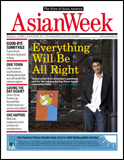 The San Francisco Bay Guardian printed an interesting piece this week on the need to encourage more independent local voices. The article, which cites The Public Press as a hopeful example of media innovation, points to the source of the crisis in journalism: economic sustainability. While there’s no shortage of good coverage ideas, there are few tested business models that can fill the void left by the contraction of traditional publishing enterprises.
The San Francisco Bay Guardian printed an interesting piece this week on the need to encourage more independent local voices. The article, which cites The Public Press as a hopeful example of media innovation, points to the source of the crisis in journalism: economic sustainability. While there’s no shortage of good coverage ideas, there are few tested business models that can fill the void left by the contraction of traditional publishing enterprises.
The piece didn’t go into detail to present The Public Press’ provisional (i.e., untested) answer: a membership model blending aspects of local public broadcasters and nonprofit magazines such as Consumer Reports. We hope to roll out a membership structure in a year or so.
The piece cites Spot.us as another local experiment. We expect to be working closely with that project to get Public Press stories funded by the public on a case-by-case basis.
Asian Week stops printing
The talk of new business models couldn’t come any sooner. On Dec. 31, James and Ted Fang, the brothers who publish Asian Week, announced that the weekly would be "ceasing regular publication" in print, effective immediately. While Asian Week’s Web site will remain, it’s hard to see how this move won’t hurt the publication’s local influence, writes George Raine of the San Francisco Chronicle. The Chronicle reported that "nearly all" of the paper’s 11 employees in San Francisco will be laid off.
In a letter to supporters, the Fangs explained that the business model that had supported tha paper for 30 years was faltering:
The economy and the news business have experienced their own changes. There are fewer major newspapers, fewer newspaper readers and fewer newspaper advertisers than ever before. A faltering economy has accelerated the decline.
This move comes five months after the weekly San Francisco Bay View ceased publication in print, noting that it had become a profit-losing business in recent years. The paper continued to publish online, and this fall began printing again as a monthly.
There’s clearly a need for innovative thinking, not only to better serve readers in ethnic communities who have come to rely on their own newspapers for smart coverage of issues that affect them, but also to provide general-interest news that bridge divides among the diverse communities in the Bay Area.










